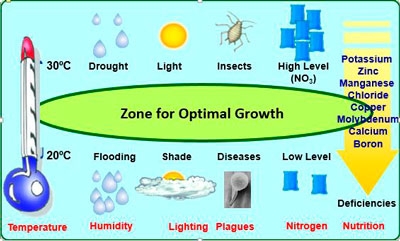If your crop could sail through the season with ideal conditions and zero stress, imagine what could be achieved.
There would be no limits in achieving yield, quality and overall return on investment.
When you think about it, most of our farm management practices are designed to take away the impact of stress:
- Optimising soil conditions including structure, pH and moisture
- Providing full and balanced nutrition (NPK and micronutrients)
- Minimising competition from weeds
- Protecting from insects and disease
- Protecting from extreme temperatures (heat waves and frost)
- Minimising extreme weather impacts (wind, flood, drought)
- Managing the irrigation for optimal supply of moisture
There is a limit to what we can do to manage all these items… but we have to try!
Be careful not to freeze your assets
As we come towards spring and anticipate still, clear conditions and low temperatures, it is a time when we are threatened by frost.
It is difficult to prevent frost damage because no matter what we do, these severe events can still have a big impact on our vulnerable crops.
The team at Stoller believe that a robust, well fed plant has the best chance of surviving and recovering from frost.
There is some evidence that calcium builds strong cells and that elements such as zinc, manganese and copper, when elevated in the plant cells, can lower the threshold temperature where tissue damage will occur.
But, if frost does hit, we want to try to minimise the impact.
Stoller frost recovery program
After frost, the aim is to minimise the downtime (as the plant tends to shut down after a frost event) and to aid the fast recovery and generation of new tissue.
The Stoller frost recovery program uses a product called Bio-Forge which can speed the recovery of a plant by driving down ethylene (stress hormone).
The program also incorporates Stoller’s Zinc Chelate which enables refreshed growth, and Foli-Zyme which promotes new vegetative growth and enhanced root development.
This combination has been proven over the years and many farms keep the stress recovery products on standby—ready for application in the event of a frost.
If you are affected by frost, it is difficult to avoid permanent damage, but the Stoller program can lessen the impact in many instances.
Steps to follow after a frost (all crops)
Step 1: As soon as possible after the stress event, apply Stoller’s Bio-Forge at 1.2 L/ha and Stoller’s Zinc Chelate at 2 L/ha to restore healthy growth. Bio-Forge will give the plants a nutrient boost and trigger new shoot growth, while Stoller’s Zinc Chelate is an essential component of many proteins and vital to many plant functions.
Step 2: Four to five days after the initial treatment, apply Stoller’s Foli-Zyme at 5 L/ha to feed the new growth and promote healthy growth. Foli-Zyme is a full nutrient spray to promote healthy tissue development.
Applying Stoller’s Bio-Forge in combination with Foli-Zyme will give plants the nutrient boost they need, trigger new shoot growth and help fruitfulness and root growth.
Stoller’s stress recovery program is suitable for a range of crops including vegetables, tree crops and vines.
To find out more, contact your Stoller representative phone 1800 FERILISER
Contact
stoller.com.au
For more information, see Tree Fruit September 2015





















